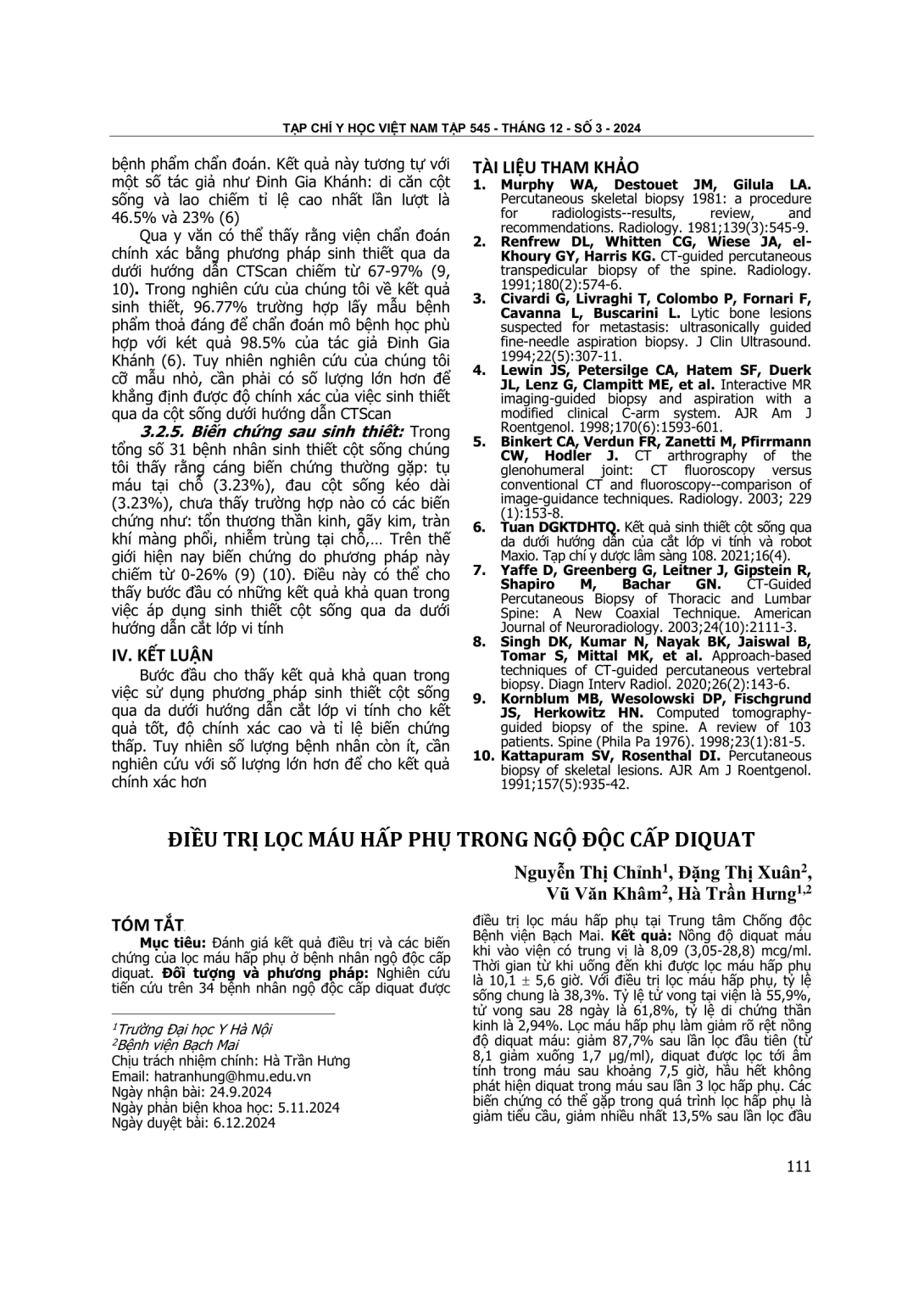
Đánh giá kết quả điều trị và các biến chứng của lọc máu hấp phụ ở bệnh nhân ngộ độc cấp diquat. Đối tượng và phương pháp: Nghiên cứu tiến cứu trên 34 bệnh nhân ngộ độc cấp diquat được điều trị lọc máu hấp phụ tại Trung tâm Chống độc Bệnh viện Bạch Mai. Kết quả: Nồng độ diquat máu khi vào viện có trung vị là 8,09 (3,05-28,8) mcg/ml. Thời gian từ khi uống đến khi được lọc máu hấp phụ là 10,1 5,6 giờ. Với điều trị lọc máu hấp phụ, tỷ lệ sống chung là 38,3%. Tỷ lệ tử vong tại viện là 55,9%, tử vong sau 28 ngày là 61,8%, tỷ lệ di chứng thần kinh là 2,94%. Lọc máu hấp phụ làm giảm rõ rệt nồng độ diquat máu: giảm 87,7% sau lần lọc đầu tiên (từ 8,1 giảm xuống 1,7 μg/ml), diquat được lọc tới âm tính trong máu sau khoảng 7,5 giờ, hầu hết không phát hiện diquat trong máu sau lần 3 lọc hấp phụ. Các biến chứng có thể gặp trong quá trình lọc hấp phụ là giảm tiểu cầu, giảm nhiều nhất 13,5% sau lần lọc đầu tiên. Chảy máu chân catheter gặp ở 1/34 bệnh nhân. Kết luận: Lọc máu hấp phụ làm giảm rõ rệt nồng độ diquat máu, giảm tỷ lệ tử vong tại viện. Các biến chứng nhẹ, thường gặp nhất là giảm tiểu cầu.
To evaluate the effectiveness of hemoperfusion in patients with acute diquat poisoning. Method: A prospective study included 34 patients with acute diquat poisoning treated by hemoperfusion at the Poison Control Center of Bach Mai Hospital. Results: On admission, the median of blood diquat concentration was 8.09 (3.05-28.8) mcg/ml. The time from ingestion to hemoperfusion was 10.1 ± 5.6 hours. With hemoperfusion treatment, the overall survival rate was 38.3%. The in-hospital mortality rate was 55.9%, the 28-day mortality rate was 61.8%, and the rate of neurological sequelae was 2.94%. Hemoperfusion significantly reduced blood diquat concentration: 87.7% reduction after the first hemoperfusion (from 8.1 to 1.7 μg/ml); diquat was negative in the blood after about 7.5 hours; diquat was not detected in the blood in most of the patients after 3 hemoperfusions. Common complication of hemoperfusion was thrombocytopenia, the largest reduction was 13.5% after the first filtration. Catheter bleeding occurred in one patient. Conclusion: Hemoperfusion significantly eliminated diquat, reducing hospital mortality of diquat poisoning. The complications of hemoperfusion were common mild, with the most common was thrombocytopenia.
- Đăng nhập để gửi ý kiến
